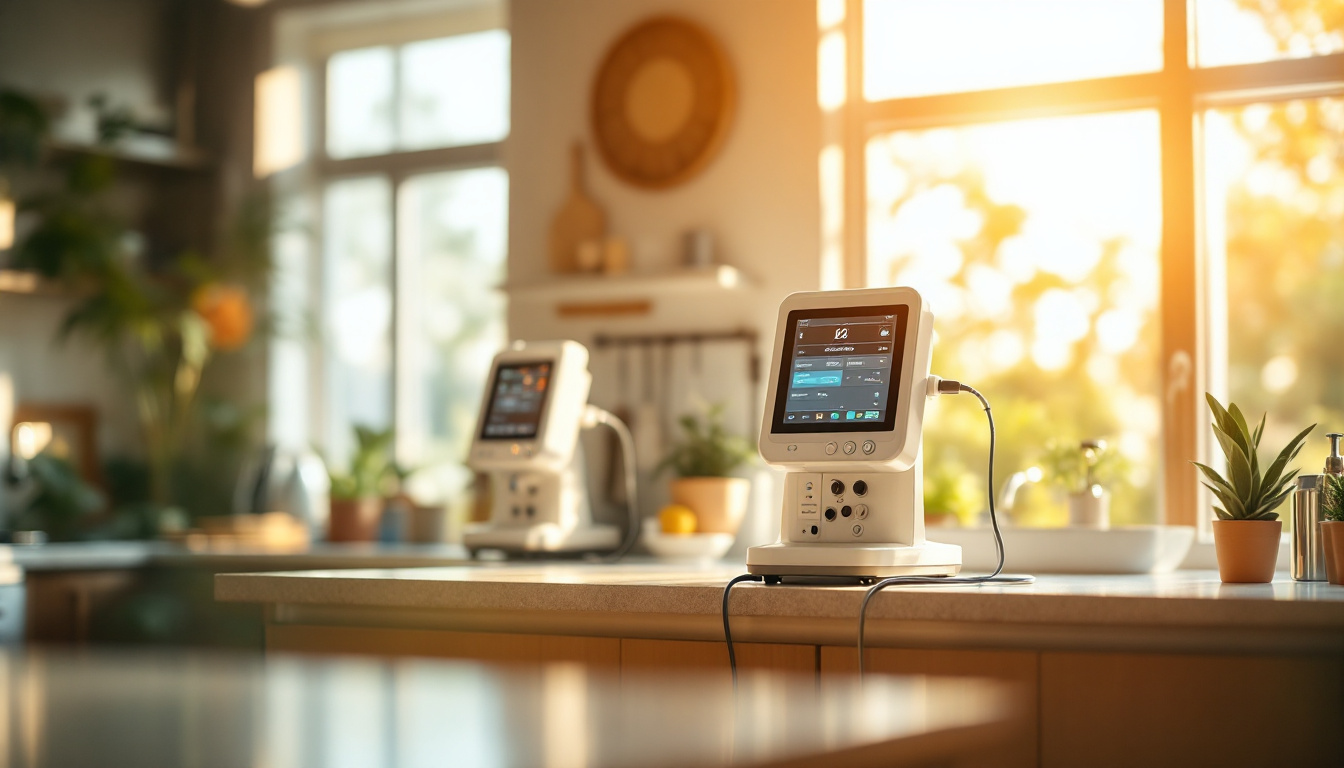What is patient-specific sterile compounding?

Understanding Patient-Specific Sterile Compounding
Patient-specific sterile compounding represents a vital component of modern healthcare pharmacy, offering personalized medication solutions that cater to unique patient needs. This practice becomes essential when standard FDA-approved drugs fall short in addressing individual patient conditions, such as allergies or specific dosage requirements. By crafting precise formulations, pharmacists can ensure optimal therapeutic outcomes, promoting safety and effectiveness in treatment. This article delves into the nuances of patient-specific sterile compounding, exploring its significance, process, and regulatory environment.
Essential Features of Sterile Compounding

What is sterile compounding and how is it used in pharmacy?
Sterile compounding is a critical process in pharmacy that involves preparing medications within controlled environments to minimize contamination risks. This method is especially vital for drugs that are delivered via intravenous (IV) injections, injections, or eye drops—routes that bypass the body's innate defense mechanisms.
In sterile compounding, pharmacists adhere to rigorous guidelines and utilize specialized equipment, such as laminar flow hoods, to maintain a clean environment. The process often requires the use of aseptic techniques to ensure that all products remain free from harmful microorganisms. This careful approach allows compounding pharmacists to create tailored medications, including parenteral nutrition solutions and chemotherapy drugs, adjusted to meet the unique medical needs of individual patients.
Why is it important to maintain sterility?
Maintaining sterility in compounded medications is vital for patient safety. Contaminated preparations can lead to serious health risks, including infections or adverse reactions, particularly when medications are introduced directly into the bloodstream or delicate tissues.
Adhering to guidelines set by organizations like the United States Pharmacopeia (USP)—specifically USP Chapter <797>—ensures that compounded products meet high quality and safety standards. Failure to comply with these standards can result in significant outbreaks and patient harm, reinforcing the importance of stringent sterility practices in pharmacy compounding.
Comparing Sterile and Non-Sterile Compounding

What are the key differences between sterile and non-sterile compounding?
The differences between sterile and non-sterile compounding center around the risk of infection and the environments in which these processes are conducted. Sterile compounding is critical for medications that require strict adherence to sterility standards, such as those administered through injections or eye drops. This type of compounding is performed in specialized environments, like sterile rooms or within compounding hoods, to eliminate any chance of microbial contamination.
In contrast, non-sterile compounding involves preparing medications that do not require the same level of environmental control. Common examples include topical creams and oral solutions, which can be safely made without stringent sterility checks. While both sterile and non-sterile compounding require personal protective equipment (PPE) and compliance with safety guidelines, the latter adheres to regulations focusing on purity and proper labeling.
| Compounding Type | Environment Required | Examples | Regulation Standards |
|---|---|---|---|
| Sterile Compounding | Controlled sterile room or compounding hood | Injections, ophthalmic solutions | USP <797> |
| Non-Sterile Compounding | Regular pharmacy environment | Creams, oral suspensions | USP <795> |
Both types must comply with the United States Pharmacopeia (USP) regulations to ensure safety and effectiveness, protecting patients during their treatment journey.
Regulatory Framework of Compounding Pharmacies

What are the regulations governing compounding pharmacies?
Compounding pharmacies in the United States operate under a regulatory framework that distinguishes between different types of compounding operations. The two main categories are 503A and 503B pharmacies, each subject to unique regulations.
503A Pharmacies
- Purpose: These pharmacies compound medications based on specific prescriptions for individual patients.
- Oversight: They are mainly regulated by state boards of pharmacy, ensuring compliance with state laws and regulations.
- Standards: Must follow USP guidelines, particularly USP <795> for non-sterile compounding and USP <797> for sterile compounding, focusing on patient safety.
503B Pharmacies
- Purpose: 503B facilities can prepare large batches of compounded products that are not patient-specific, allowing distribution to healthcare facilities.
- Oversight: These pharmacies face stricter regulation by the FDA, adhering to current good manufacturing practices (cGMP) and ensuring safety across their compounding processes.
Both 503A and 503B pharmacies must comply with the Federal Food, Drug, and Cosmetic Act. The evolving landscape of regulations has recently prompted tighter controls, especially concerning the compounding of specific drugs like GLP-1 receptor agonists, underscoring the importance of maintaining high safety and efficacy standards to protect patient health.
Difference between 503A and 503B pharmacies
Here's a quick comparison of the two types of compounding pharmacies:
| Feature | 503A Pharmacies | 503B Pharmacies |
|---|---|---|
| Patient Focus | Compounds for individual patients as prescribed | Compounds in bulk for healthcare facilities |
| Regulatory Body | State boards of pharmacy | FDA, with adherence to cGMP |
| Production Limitations | Limited to specific prescriptions | Can produce large batches |
| Compliance Standards | Must adhere to USP <795> and <797> | Must adhere to stricter cGMP standards |
This framework emphasizes the distinct roles of compounding pharmacies in patient care, ensuring tailored medications are both effective and safely prepared.
The Role of Certification in Sterile Compounding

What is the role and importance of Compounded Sterile Preparations Pharmacy Specialty Certification?
The Compounded Sterile Preparations Pharmacy Specialty Certification (CSP) plays a crucial role in ensuring that pharmacists possess the necessary skills and knowledge to carry out sterile compounding safely. This advanced certification is not merely a credential; it signifies a commitment to upholding the highest standards of patient safety and quality in pharmacy practice.
With over 1,780 certified professionals in the field, this certification provides healthcare providers with the assurance they need when prescribing compounded medications. By promoting confidence in collaborative patient care, CSP certified pharmacists can significantly enhance the therapeutic outcomes for patients.
As compounding practices become increasingly influenced by stringent U.S. Pharmacopeia standards and regulations, the importance of CSP certification has grown. The certification process involves rigorous eligibility criteria and mandates ongoing recertification to reflect the pharmacists' accountability in medication preparation and delivery.
Incorporating CSP-certified pharmacists into healthcare teams helps mitigate risks associated with compounded medications. From ensuring the sterility of injectables to customizing drug formulations for patient-specific needs, certified pharmacists are indispensable in maintaining safety and efficacy—ultimately enhancing the overall quality of healthcare.
Safety Standards and Risks in Patient-Specific Sterile Compounding
What are the safety standards and implications of patient-specific sterile compounding?
Patient-specific sterile compounding plays a vital role in patient care, but it involves significant safety considerations. Compounded sterile preparations (CSPs) must meet stringent standards to minimize risks associated with contamination and ensure overall patient safety.
Key safety measures include:
- Ingredient Quality: Ingredients must be verified for identity, purity, strength, and sterility.
- Environmental Controls: Compounding must occur in sterile environments adhering to specific regulations, such as USP Chapter <797>, which outlines standards for sterile compounding.
- Staff Training: Personnel must be adequately trained in aseptic techniques, emphasizing cleanliness in preparation areas to reduce the risk of contamination.
- Equipment Maintenance: Regular checks and calibrations of compounding equipment are crucial to ensure adherence to safety standards.
Risk classifications for CSPs include low-, medium-, and high-risk levels, which depend on potential contamination during the compounding process. High-risk CSPs require even more stringent control measures.
Additionally, continuous education and compliance with both federal and state regulations are essential. This process ensures that pharmacists not only maintain their skills but also keep abreast of best practices, thus further safeguarding patient health against compounding errors.
Applications and Advantages of Patient-Specific Sterile Compounding

What are the benefits and applications of patient-specific sterile compounding in pharmacy?
Patient-specific sterile compounding plays a crucial role in modern pharmacy by enabling the creation of customized medication solutions designed for individual patient needs. Here are some of the significant applications and benefits of this practice:
Age-appropriate formulations: Compounding allows pharmacists to tailor medications to the unique requirements of pediatric and geriatric patients. For example, younger patients may require flavored liquids instead of pills, increasing adherence and cooperation in treatment.
Handling medication shortages: Compounding can address the unavailability of specific medications in the market, especially critical in settings where standard drugs do not meet patient needs. This flexibility ensures timely therapeutic interventions, particularly in emergency or resource-limited environments.
Sterility and safety for sensitive applications: Sterile compounding is essential for producing injectable and ophthalmic medications. This process adheres to strict standards, ensuring that preparations are free from microorganisms, which is vital for maintaining patient safety during administration.
Customization for special needs: Many patients have unique requirements, such as allergies or intolerance to commercial drug components. Compounding can eliminate specific allergens or adjust dosages to provide safer and more effective treatment options.
In summary, patient-specific sterile compounding enhances the precision and effectiveness of pharmacotherapy while contributing significantly to improved health outcomes and patient safety.
The Critical Role in Healthcare
Patient-specific sterile compounding stands as a cornerstone of personalized medicine, a field where customization is key to achieving the best possible patient outcomes. The intricacies involved in this practice, from adhering to strict regulatory frameworks to ensuring safety through rigorous standards, exemplify its indispensable role in contemporary healthcare. As medical needs continue to evolve, compounded sterile preparations will remain crucial in addressing the unique requirements of patients across various demographics and conditions. By maintaining uncompromising standards for quality and safety, the pharmaceutical community can ensure that this essential service continues to support effective, patient-centered care.
References
- Compounding and the FDA: Questions and Answers
- [PDF] Sterile Compounding Hospital Administration Discussion Guide
- Patient-Specific 503A Compounding - Belmar Pharma Solutions
- [PDF] Compounding Guidances Frequently Asked Questions - ASHP
- An Overview of Compounding - The Clinical Utility of ... - NCBI
- Human Drug Compounding - FDA
- 503A vs. 503B: A Quick-Guide to Compounding Pharmacy ...



































































































